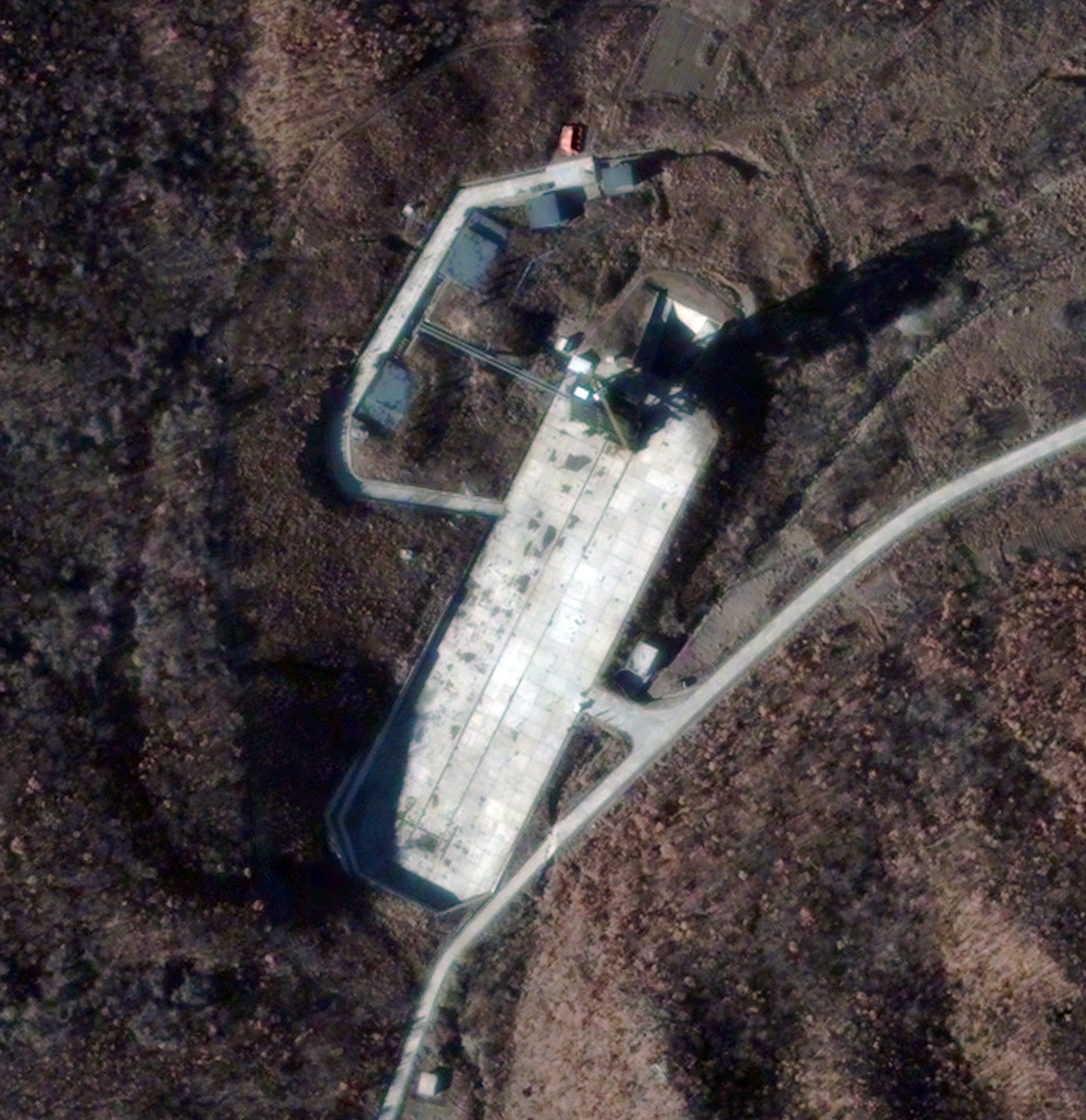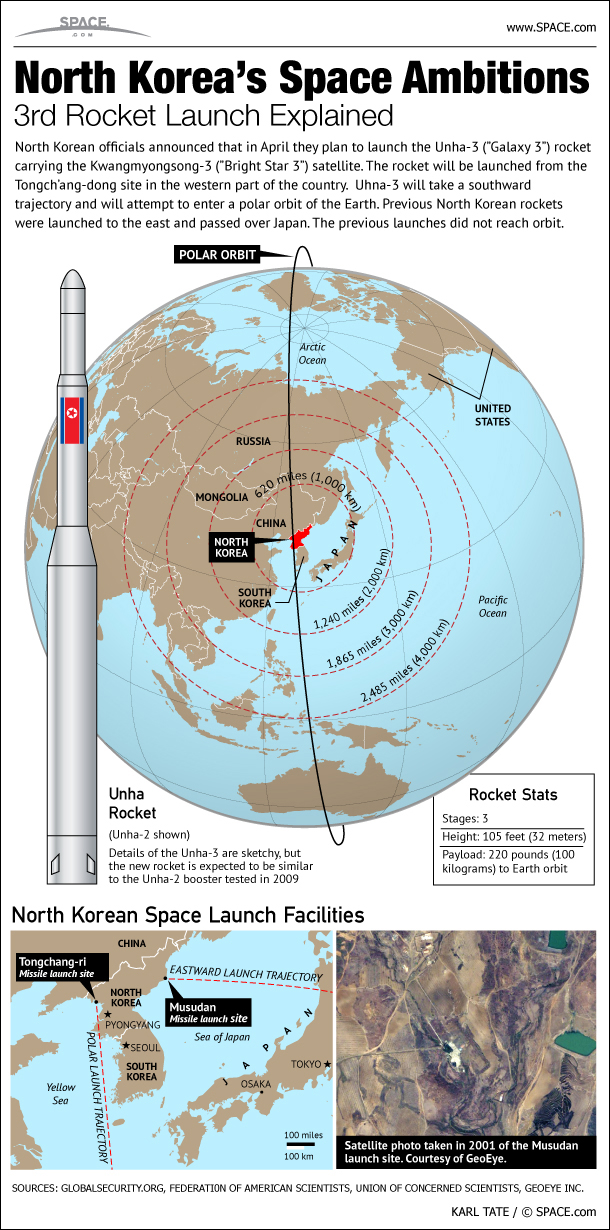
North Korea has apparently launched a satellite to orbit, in a move that the United States and other nations quickly condemned as an attempt to further develop a prohibited long-range missile capability.
The liftoff occurred from the Sohae launch facility in western North Korea at 7:29 p.m. EST Saturday (Feb. 6; 0029 GMT and 8:59 a.m. local North Korean time on Sunday, Feb. 7), according to a media advisory from the United States Strategic Command (USSTRATCOM).
"The missile was tracked on a southerly launch over the Yellow Sea. NORAD determined that at no time was the missile a threat to North America," the USSTRATCOM advisory read, referring to the North American Aerospace Defense Command, a joint effort of the United States and Canada. [Images: North Korea's Rocket Program]

North Korean officials claimed the launch succeeded in putting an Earth-observation satellite called Kwangmyongsong-4 into orbit. USSTRATCOM officials told CNN that at least two new space objects were detected after the liftoff; these are likely the satellite and the rocket's first stage, an expert told CNN.
Officials in the United States, Japan, South Korea and a number of other nations, however, viewed the launch as primarily cover for the testing of military missile technology. North Korea possesses nuclear weapons, and experts believe the secretive, unpredictable nation is working to develop the means to deliver them great distances.
Pyongyang has certainly voiced a desire to use nuclear weapons against its perceived adversaries. In 2013, for example, North Korean officials — apparently angered by United Nations sanctions and joint U.S./South Korean military exercises — said they would turn Washington, D.C. and other major American cities into "seas of fire."
Saturday's launch came just one month after North Korea (which is also known as the Democratic People's Republic of Korea, or DPRK) conducted an apparent nuclear test. Pyongyang claimed the Jan. 6 test involved a hydrogen bomb, but outside experts said it instead probably detonated a less-powerful fission weapon, which North Korea has tested multiple times in the past.
Get the Space.com Newsletter
Breaking space news, the latest updates on rocket launches, skywatching events and more!
UN Security Council resolutions prohibit North Korea from conducting ballistic-missile and nuclear-weapons tests. So Saturday's liftoff elicited nearly immediate condemnation from the United States, Japan, South Korea and other nations.
"This is the second time in just over a month that the DPRK has chosen to conduct a major provocation, threatening not only the security of the Korean peninsula, but that of the region and the United States as well," U.S. Secretary of State John Kerry said in a statement Saturday.
"We reaffirm our ironclad commitment to the defense of our allies, including the Republic of Korea [South Korea] and Japan," Kerry added. "We will continue to work with our partners and members of the UN Security Council on significant measures to hold the DPRK to account."
North Korea has now conducted four known nuclear tests, as well as a number of long-range missile/rocket launches. Attempts to loft satellites in 1998, 2009, and April 2012 failed, while a December 2012 launch apparently did place an object in orbit (though it's unclear if that object is actually doing anything as it zips around Earth).
Follow Mike Wall on Twitter @michaeldwall and Google+. Follow us @Spacedotcom, Facebook or Google+. Originally published on Space.com.
Join our Space Forums to keep talking space on the latest missions, night sky and more! And if you have a news tip, correction or comment, let us know at: community@space.com.

Michael Wall is a Senior Space Writer with Space.com and joined the team in 2010. He primarily covers exoplanets, spaceflight and military space, but has been known to dabble in the space art beat. His book about the search for alien life, "Out There," was published on Nov. 13, 2018. Before becoming a science writer, Michael worked as a herpetologist and wildlife biologist. He has a Ph.D. in evolutionary biology from the University of Sydney, Australia, a bachelor's degree from the University of Arizona, and a graduate certificate in science writing from the University of California, Santa Cruz. To find out what his latest project is, you can follow Michael on Twitter.









